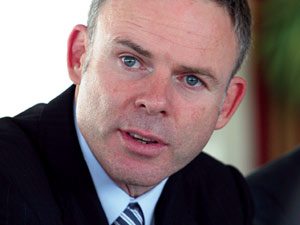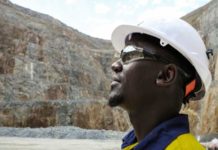
[miningmx.com] – MARIUS Kloppers, CEO of BHP Billiton, finally joins his former counterparts at the world’s other two major miners – Tom Albanese at Rio Tinto and Anglo American’s Cynthia Carroll – in some verdant corner of pasture, munching on clover.
Given that all three were appointed to their respective posts in the same year – in fact, eight months apart in 2007 – and have since announced their respective resignations within the last six months – raises the inevitable question as to whether the corporate equivalent of some Newtonian constant is at work. Can the money universe possess such symmetry?
It’s true that six years is about the average life-cycle of the modern CEO, but one wonders about the timing of the appointments in each case, only months before the financial and economic crisis knocked the global economy from its perch. Are, then, Kloppers, Carroll and Albanese the leading lights of the boom/bust generation?
(A fourth executive, Mick Davis is also to leave (Xstrata) later this year, but he joined the company in 2002 and his departure is unlike any of the reasons that have sent the others to pasture).
Speaking at the Mining Indaba in Cape Town earlier this month, Ric Deverill, MD and head of commodities research at Credit Suisse, argued that the financial and economic crisis in 2007/2008 halted the commodity super cycle in its tracks, permanently.
“The super cycle stopped in 2007; Chinese exports are unlikely to reach that level again,’ he said, adding that steel production might grow as much as 4.5% this year, but that iron ore production was growing at 8%. “Most of the new [iron ore] production was coming from Australia which is growing at 12%,’ said Deverill.
Hence the somewhat restrained note in BHP Billiton’s recent economic outlook. “The longer term outlook remains robust,’ it said. It then warned that supply was “. better placed to keep pace with demand for some commodities.
Substantial new supply from the low cost basis of the Pilbara in western Australia was one. Metallurgicaly coal demand was likely to be met from the low cost, high quality basins while over capacity in the aluminium and nickel industries was likely to persist for the forseeable future.
In 2007, these conditions could be not foreseen; the super cycle was in full cry and the CEOs appointed to capitalise on China growth were in some respects selected for endeavour rather than mining skills, which is not to say they didn’t have mining skills.
But in a brave new world, as the commodities market must have looked six years ago, you turn to youth and energy over conservatism.
The class of 2013, therefore, has a different look about them: Mark Cutifani at Anglo American, Andrew Mackenzie at BHP Billiton and Rio Tinto’s Sam Walsh would appear, in general terms, to have more of the tried-and-tested about them.
Certainly, they have ‘years in the game’ on their side with an average age of 57 years compared to the average age of 48 years of the boom/bust generation mentioned above. For instance, Kloppers was only 45-years old when appointed at BHP Billiton. Mackenzie is 56 years old.
“The move to appoint Mackenzie is the latest of a string of major mining company appointments marking a move to more experienced managers within mining companies,’ said SP Angel, a UK stockbrokerage.
“Miners are still largely enjoying multi-billion dollar profits and the potential for further growth, but the need to maintain costs and better manage these businesses seems to have forced through a new breed of tough-talking managers,’ the stockbroker said in a note to clients.
Some key statistics:
Cynthia Carroll
55 years
Salary $3.87m (total compensation)
5-year share price: -40%
Tom Albanese
54 years
Salary $7,02m (total compensation in 2011)
5-year share price: -25%
Marius Kloppers
50 years
Salary $9,82m (total compensation)
5-year share price: +30%











